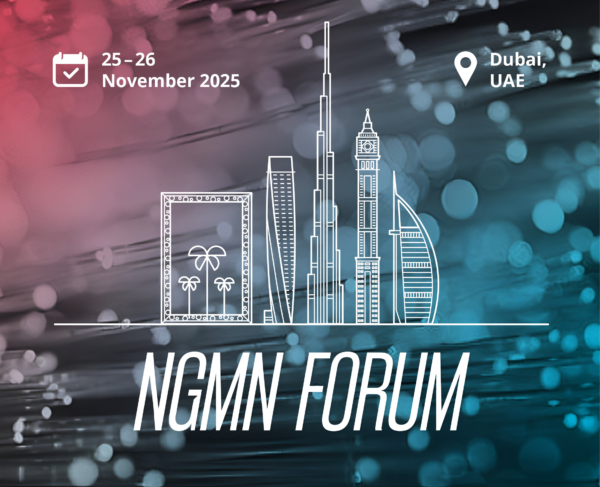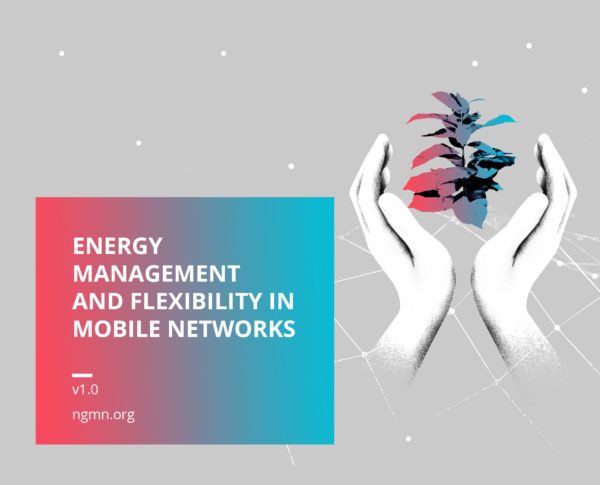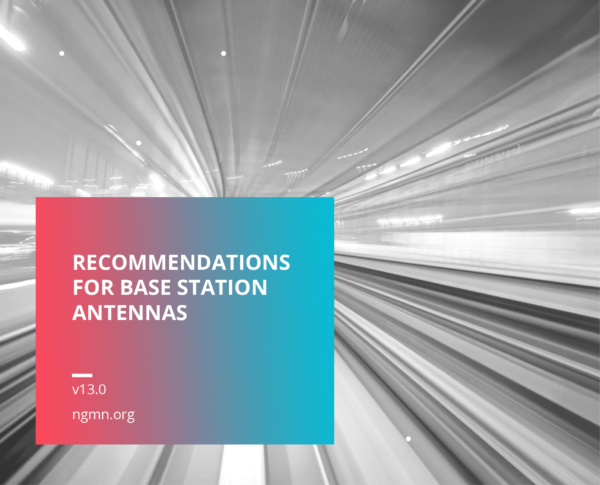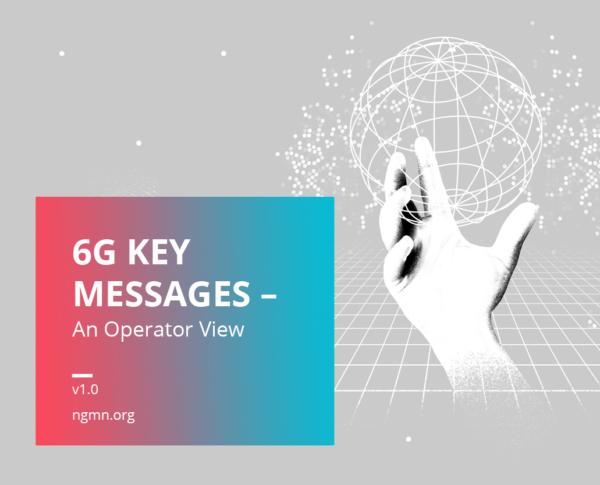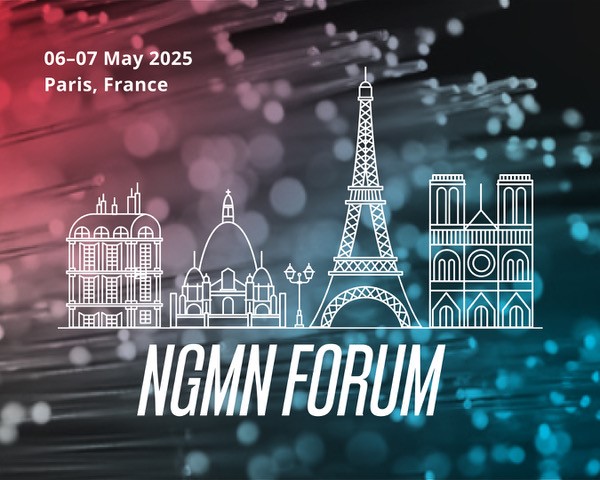Category: NGMN News
NGMN FORUM
Dubai, UAE // by Juliya Naumova25 – 26 November 2025 – Dubai, UAE
6G in the Hot Seat: The Debate on Innovation, AI!
Dublin, Ireland // by Juliya Naumova- AI for Networks and Networks for AI
- Network Evolution through Software-Driven Innovation Cycles: The Operator’s View on Continuous Innovation, Simplification and Sustainability
- 6G Use Cases
- The 6G Narrative: What Truly Matters for MNOs, Standards, and End Users
With:
- Laurent Leboucher, Orange – Chairman of the NGMN Alliance Board
- Bernard Bureau, TELUS – NGMN Board Director
- Cayetano Carbajo, Telefónica – NGMN Board Director
- Anita Doehler, NGMN – CEO
This session brought together industry leaders for an open and interactive discussion around the future 6G narrative. The conversation addressed current points of debate within the ecosystem, with the shared goal of ensuring that the next generation of mobile networks effectively serves end users, operators, vendors, and the wider industry community.
Event details:
🗓 04 November 2025
🕞 03:30 – 05:00 pm
📍 FYUZ 2025, CCD, Dublin, Ireland
NGMN provides green initiative boost with new energy management guidance
//in NGMN News, Press Release //by Juliya NaumovaDüsseldorf, Germany, 24 July 2025 –Mobile Network Operators (MNOs) can more easily adopt energy management strategies that lower costs, cut emissions, and unlock new revenue streams thanks to industry-first guidance from the Next Generation Mobile Networks Alliance (NGMN).
The new guidance outlines how MNOs can benefit from deploying local renewables and batteries at cell sites for their own energy generation – becoming virtual power plants – and sell energy back to energy companies to help better manage operational costs and navigate limited energy resources.
“As the shift towards green energy accelerates, energy management is becoming a core focus for MNOs and the wider mobile industry as we look to reduce our energy footprint and improve the planning and management of our limited energy resources,” said Chairman of the NGMN Alliance Board and Orange Group CTO and EVP Networks Laurent Leboucher. “NGMN’s guidance provides operators with a toolkit of options they can apply in order to manage this transition effectively.“
The publication ‘Energy Management and Flexibility in Mobile Networks’ explores energy management at both the cell site and network levels, highlighting the technical and operational process changes MNOs are required to embrace to support the energy transitions of national grids. It outlines the key challenges – from local wind and solar capabilities, grid connections, tariffs and batteries requirements – that MNOs need to manage when integrating renewables into their networks to achieve their respective sustainability goals, such as reducing emissions, cost, or grid-balancing targets.
The guidance also urges MNOs to consider how advanced their countries’ grids are in integrating variable renewable energy (VRE), such as wind and solar. For example, in countries where VRE is already well established, it may not be beneficial for operators to invest heavily in building their own renewable energy sources.
“The transition to the green economy provides unique opportunities for mobile operators and the industry at large to play a wider role in enabling and supporting change at the national level,” said NGMN Board Director and Vodafone Head of Group R&D Luke Ibbetson. “For example, not only can MNOs benefit from deploying local renewables and batteries at cell sites, depending on national legislation, but they can also use those assets to offer new services to energy companies in the form of balancing the grid. As the grid becomes more dependent on variable and intermittent energy sources, enabling grid flexibility becomes increasingly important,” he added.
The publication aims to help operators identify key considerations when making a choice on energy strategy so that the right balance between sustainability goals, investments, and energy cost stabilisation can be achieved.
“Our publication ‘Energy Management and Flexibility in Mobile Networks’ is the latest guidance from NGMN’s Green Future Networks Programme, moving the discussion forward from energy efficiency and energy saving in mobile networks towards energy management,” said NGMN CEO Anita Doehler. “Since 2021, our members have worked collaboratively to provide essential guidance that helps the mobile industry reduce its emissions and environmental footprint, and we will continue providing actionable guidance as part of our Green Future Networks Programme. I strongly encourage all industry stakeholders to implement these latest recommendations depending on their specific circumstances and local legislation and joining NGMN to help drive forward this vital work together with fellow decision-makers,” continued Doehler.
The new publication can be downloaded here.
Further information and all NGMN publications can be found on the website at ngmn.org.
NGMN unveils common language for base station antennas – A milestone toward simplified mobile network deployment
//in NGMN News, Press Release //by Juliya NaumovaDusseldorf, Germany, 09 July 2025 – The procurement, testing and deployment of base station antennas – a critical component in the delivery of mobile communications – will be simpler for operators and suppliers thanks to new guidance for the creation of a ‘common language’ to describe the technology.
For the first time, the mobile industry has been provided with a single document that sets shared rules for describing passive, active and hybrid base station systems, thanks to the latest release of the NGMN Alliance’s ‘Recommendations for Base Station Antennas’ publication. This represents an important step forward as the industry moves towards hybrid antenna systems, which combine active and passive technologies to deliver mobile communications solutions, such as 5G, in a more versatile and efficient way.
“Mobile networks rely on base station antennas to deliver high quality mobile services to consumers and businesses,“ said NGMN Chairman and Orange Group CTO and EVP Networks Laurent Leboucher. “Through this guidance we continue to enable the industry to have a common language to plan, build, operate and maintain critical antenna infrastructure in networks throughout the world.”
The publication, led by NGMN’s BASTA (Base Station Antenna Architecture) project, empowers vendors and operators to more easily share technical information about antenna systems using similar parameters and formats. This makes it easier for operators to evaluate different antennas and thereby facilitates the planning and design of networks. It also helps network engineers to efficiently communicate in later stages in the lifecycle of the antenna systems such as in network operations and maintenance.
“As antenna technology continues to evolve, it is more important than ever to work closely with our partners and the wider industry to ensure we can efficiently adopt these systems in our networks,“ said NGMN Board Director and TIM’s Head of Technology Evolution and Innovation Andrea Calvi. “NGMN’s Base Station Antenna Project (BASTA) has provided the platform for us and our partners to collaborate and agree on the technical parameters that describe modern base station antenna systems” he continued.
The latest release of ‘Recommendations for Base Station Antennas’ is a detailed technical document that defines parameters that describe the electrical, mechanical and Radio Frequency (RF) characteristics of the antenna system. The document is also supported by XML files that allow the digital exchange of antenna datasheets.
“Having a common language to describe antennas enables operators and manufacturers alike to save costs and reduce time to market when deploying new antenna infrastructure,” said NGMN CEO Anita Doehler. “These savings are directly attributable to the collaboration enabled by active participation of our membership in NGMN Alliance’s projects”, she added.
The BASTA project team plans to maintain and develop the publication through future versions that will develop the parameter set to continue to align with new antenna technologies. Possible areas for future focus include defining and reporting antenna sustainability parameters (e.g. energy efficiency, carbon footprint etc). NGMN strongly encourages all MNOs and antenna systems vendors to join NGMN and participate in this project. Collaboration is key to driving the industry’s most important topics such as NGMN’s strategic pillars: Operating Disaggregated Networks, Green Future Networks, and 6G. NGMN therefore invites all parties across the entire value chain to join the Alliance in this important endeavour.
The publication can be downloaded here.
Further information and all NGMN publications can be found on the website at ngmn.org.
NGMN calls for harmonised 6G standards to drive seamless mobile evolution on behalf of global MNOs
//in 6G News, NGMN News, Press Release //by Nadine FassbenderDüsseldorf, Germany, 11 June 2025 – As the telecommunication standards body 3GPP prepares for setting the scope for Release 20, the Next Generation Mobile Networks Alliance (NGMN) has released a publication advocating the critical need for harmonised global standards for 6G.
“6G Key Messages – An Operator View” says that standards should build upon the features and capabilities introduced with 5G and create value through new services which are essential to support continuous innovation, delivering real benefits to users and operators while addressing evolving societal needs and fostering a sustainable ecosystem.
The publication consolidates key messages from previous NGMN deliverables around 6G and puts them into an operator perspective, reiterating the renowned NGMN’s 6G Position Statement published in 2023. Industry leaders stress that the transition to 6G should be evolutionary and that the evolution should not force a complete hardware refresh. While new radio equipment is required for deployment in new frequency bands, the evolution toward 6G in existing bands should primarily occur through software upgrades, ensuring a smooth transition.
6G must demonstrate clear, tangible benefits within a realistic techno-economic framework. Network Architecture needs to meet MNOs criteria for modularity, simplicity, openness, operational simplification, compatibility and interoperability, and trustworthiness while delivering economic and social sustainability. These factors are crucial to enable fast deployment and to support the development of market-aligned services that meet user demands.
Laurent Leboucher, Chairman of the NGMN Alliance Board and Orange Group CTO and EVP Networks, explained “6G should be viewed as a seamless evolution — fully compatible with 5G and propelled by continuous software innovation. The industry must move beyond synchronised hardware/software ‘G’ cycles and embrace decoupled roadmaps: one for hardware infrastructure, guided by value-driven and sustainable investments, and another — faster and demand-led — for software-defined business capabilities addressing real needs from society.”
“Along with presenting this consolidated view to 3GPP, this publication serves as a foundation for engaging with the broader industry, driving collaboration, innovation, and strategic direction in the evolving 6G landscape,” said Anita Döhler, CEO of NGMN . “A core tenet of our message is that 6G is not treated as another generational shift for mobile technology – it must be evolutionary.”
“Network evolution is essential for addressing ever-changing societal needs. To achieve this, we need to work collectively as an industry to ensure all future networks are secure, environmentally sound, and economically sustainable,” said Luke Ibbetson, Head of Group R&D at Vodafone and NGMN Board Director.
This publication further outlines the operator view on network requirement and design considerations on the Radio Performance Assessment Framework (RPAF), including guidance for new 6G Radio Access Technology (RAT). It emphasises that any proposed solutions must be assessed against a reasonable baseline to demonstrate meaningful performance gains.
The publication can be downloaded from here.
NGMN publishes new reporting guidance to accelerate carbon emissions reductions in mobile industry
//in GFN News, NGMN News, Press Release //by Juliya NaumovaDüsseldorf, Germany, 21 May 2025 – The Next Generation Mobile Networks Alliance (NGMN) today released new guidance to support more effective carbon emissions reduction in the mobile industry through improved reporting practices and stronger collaboration.
The publication, “Green Future Networks: Environmental Sustainability and Reporting”, offers practical recommendations for addressing Scope 3 emissions – those generated across the broader value chain – which represent approximately 90% of total emissions for mobile network operators (MNOs)1
NGMN advocates for a shift toward using primary (unit-based) emissions factors rather than traditional financial (price-based) ones to enhance reporting accuracy. The guidance also emphasises the need for greater collaboration and industry-wide alignment of calculation methods.
“Tackling Scope 3 emissions is one of the greatest challenges for our industry — and it can only be done through stronger collaboration across the value chain,” said Laurent Leboucher, Chairman of the NGMN Alliance Board and Orange Group CTO and EVP Networks. “This new guidance marks an important step toward more accurate, transparent reporting and provides a clear path for the industry to prioritise meaningful carbon reduction.”
The publication assesses the current state of sustainability reporting across MNO value chains and outlines challenges faced by both operators and infrastructure suppliers in addressing Scope 3 greenhouse gas emissions — those originating from the value chain rather than sources directly controlled by the companies. It highlights key issues such as data availability, accuracy, and inconsistent estimation approaches, all of which impact emissions reporting.
The guidance calls for emissions reporting based on unit-based emission factors – calculated by multiplying a specific factor per unit of product or category by the number of units used – which provide greater accuracy than spend-based methods. This shift will require closer collaboration among value chain partners to improve data sharing and align calculation methods.
“Reducing emissions across the value chain requires close collaboration with our supply chain partners to identify the main sources of emissions,” said Saima Ansari, GFN Project Lead and CR Segment Lead, Technology & Innovation at Deutsche Telekom. “By working together to ensure we all have access to accurate data on emissions factors and energy mix, we can better assess our carbon footprints and take targeted action to meet our reduction goals.”
The publication also reviews key standards and regulatory frameworks, explores their interrelationships, and recommends that stakeholders stay aligned with and actively contribute to the evolving regulatory landscape.
“Since 2021, our Green Future Networks programme has brought together operators, vendors and academia from around the world to collaborate, share insights and co-develop strategic guidance on one of the most critical issues facing our industry,” said Anita Doehler, CEO of the NGMN Alliance. “We are proud of our members’ continued commitment to advancing sustainability.”
The publication can be downloaded from here.
___
1 Averaged value based on data from leading international operators and their suppliers, as reported in their ESG reports in 2023.
NGMN FORUM
Paris, France // by Nadine Fassbender06 – 07 May 2025 – Paris, France
Interview with new chairman outlining NGMN’s key priorities
//in NGMN News, Press Release //by Juliya NaumovaInterview with leaving chairman on positioning NGMN for the future
//in NGMN News, Press Release //by Juliya NaumovaCONTACT
NGMN Alliance e.V.
Signature by Regus
Breite Straße 3
40213 Düsseldorf, Germany
Phone +49 211 540 596 005
office@ngmn.org

